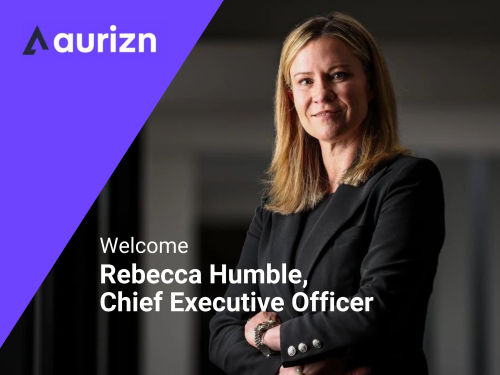Tom Matthews
One of the biggest trends in private equity over the last few years has been the rise of Continuation Funds, where private equity firms roll over assets from funds nearing the end of their lifecycle into newly established standalone vehicles.
Continuation Funds are relatively new to Australia but far more common in more developed private equity markets like the US and Europe. However, we are likely to see them more and more in Australia over the next 12 months or so.
What is a Continuation Fund?
A Continuation Fund is a new entity set up and managed by a private equity manager to acquire either an individual asset, or group of assets, owned by the same private equity manager in one of its legacy funds.
What’s driving the rise of Continuation Funds?
Private equity funds are typically fixed term closed end funds (usually 10 years and often with a number of extensions beyond this). However, there is ultimately a fixed end date for a private equity fund, at which point the investors expect the final portfolio companies remaining in the fund to be cashed out and proceeds returned.
This time constraint can cause the private equity manager a number of headaches, such as:
- Exit environment – The economic environment might not be right at this specific time to achieve a value maximising outcome when these remaining portfolio companies need to be sold. This is particularly relevant where one or more of the remaining portfolio companies in the legacy fund is a “trophy asset” (i.e. one of the winners / best performers). A forced exit of a trophy asset is unlikely to be in the best interests of shareholders (including the founders and / management team), the investors in the fund or the private equity manager
- Liquidity – Towards the end of the fund life, the majority of capital will likely already be drawn. Accordingly, the remaining portfolio companies in the legacy fund might not be able to access the capital they require to fund accelerated growth initiatives. A Continuation Fund specifically addresses this issue, as it can include additional capital earmarked for growth initiatives for that business
- Investors – The investors in the legacy funds may have their own internal time constraints and not be open to any further extensions to the life of the legacy fund
- Economics – Even if the investors in the legacy fund may be open to an extension, then they will likely require the management fee the private equity manager is able to charge in relation to the legacy fund either falls away entirely or there is a significant discount in exchange for them granting an extension.
Let your winners run
Rather than the focus being on “problem assets” (i.e. those that are underperforming), the assets transferred to Continuation Funds are usually the best performers of the legacy fund and can therefore be considered a growth or momentum play.
Continuation Funds have become a way for private equity managers and their investors to hold on to their top performing portfolio companies for longer, rather than selling them outright to another private equity manager, trader buyer or listing them on a stock exchange.
What are the advantages of Continuation Funds?
If the challenges of a Continuation Fund (see section below) can be successfully navigated, then they can be hugely advantageous to all parties involved, namely:
- Investors in the legacy fund – investors in the legacy fund are given the choice of either taking liquidity by crystallising gains from the asset to date or rolling into the Continuation Fund. Rolling investors gain continued exposure to assets they know well and reinforce their relationship with the private equity manager
- New investors in the Continuation Fund – incoming investors in the continuation vehicle get full visibility of the asset they’re buying into (and an understanding of its track record), as well as beginning a new relationship with the private equity manager. The other key advantages for new investors are (i) the fees charged by the private equity manager for the Continuation Fund are typically at a discount to those on traditional funds; (ii) as mentioned previously, the assets in the Continuation Fund tend to be the “trophy assets”. Incoming investors therefore get exposure to these trophy assets; and (iii) given the Continuation Fund is usually fully invested from the outset, the J-Curve is flattened
- For the private equity manager there are many benefits. If the legacy fund has performed well, then selling the remaining assets into a Continuation Fund could crystallise carried interest (a performance fee) for the private equity manager. The establishment of a Continuation Fund also enables the private equity manager to reset the economics moving forward by way of a new management fee and carried interest on the Continuation Fund. This can be particularly helpful if there have been changes to the team since the establishment of the legacy fund and / or these trophy assets are being managed by up and coming team members who might not have meaningful incentives in the legacy fund.
Navigating the challenges
With the private equity manager being on both sides of the trade (i.e. being both the buyer and seller in these transactions), there is the potential for conflicts of interest to arise and private equity managers must be careful to navigate these.
- Investor approval – In launching a Continuation Fund a private equity manager will typically need approval from the LP Advisory Committee of the existing fund. Engagement at an early stage is key, showing transparency and alignment with the interests of their investor base. Clearly communicating the financial and commercial logic for a transaction will greatly increase the chances of a deal succeeding
- Pricing – Since private equity managers are on both sides of the transaction, they need to show their current investors, whether exiting or rolling, and incoming Continuation Fund investors, that the price discovery process has been fair and transparent. This can be done through a range of strategies, from running an auction process to soliciting competing offers, to appointing a panel of independent experts to provide a fair valuation
- Alignment of interests – Incoming investors in the Continuation Fund will usually require significant “skin in the game” (i.e. financial alignment) from the private equity manager. This could take the form of personal co-investment from the private equity team and / or reinvestment of carried interest that gets crystallised from the sale of the asset(s) out of the legacy fund.
What next?
If you would like to learn more about Continuation Funds, then please email me at tomm@pemba.com.au and I’ll be happy to discuss further.


